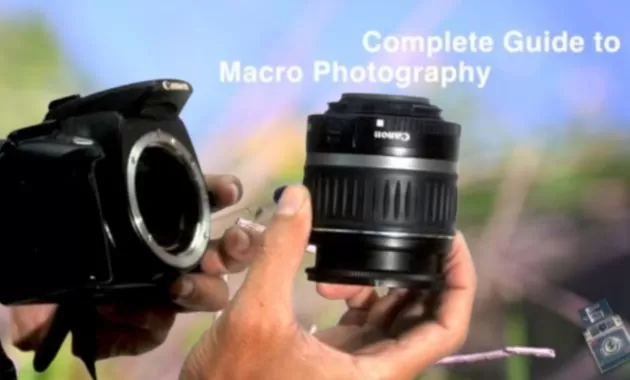Multymeter.com-Technology: Hello everyone, welcome to this interesting article. This time we will discuss macro photography, which is a type of photography that captures small details of the subject that are usually invisible to the naked eye. Macro photography is very interesting because it can show the beauty and uniqueness of the micro world, such as insects, flowers, fungi, and so on.
Of course, to be able to do macro photography well, we need an appropriate lens. A macro lens is a lens specifically made to focus very close to the subject so that it appears large in the viewfinder as well as in the final output. A macro lens is capable of projecting the subject onto the camera sensor at life size at a 1:1 reproduction ratio.
However, not all macro lenses are the same. There are several types of macro lenses that are distinguished by their focal length, namely short macro lenses (35mm-60mm), medium macro lenses (90mm-105mm), and long macro lenses (150mm-200mm). Each type of macro lens has its own advantages and disadvantages that we need to know before choosing one. The following are tips and tricks for macro photography with the right lens.
Short Macro Lens (35mm-60mm)
A short macro lens is a macro lens that has a light weight and is quite cheap. This lens is suitable for beginners who want to try macro photography without having to pay a lot of money. Short macro lenses can also be used for other types of photography, such as portraits, landscapes or architecture.
However, short macro lenses also have some drawbacks. One of them is the very short minimum focus distance, which is about 13 cm. This means that we have to be very close to the subject to get the maximum magnification. This can make it difficult for us with exposure, focusing, and composition. In addition, we can also frighten or annoy living subjects who are sensitive to our movement or shadows.
Therefore, tips and tricks for macro photography with a short macro lens are as follows:
- Use a tripod to reduce camera shake and make focusing easier.
- Use a dedicated macro flash or ring light to provide additional light on the subject.
- Use a reflector or white paper to reflect natural or artificial light onto the subject.
- Choose a subject that doesn’t move or escape easily, such as flowers, mushrooms, or dead insects.
- Don’t forget to clean the background from distracting things, like twigs, leaves or trash.
Intermediate Macro Lens (90mm-105mm)
Medium macro lenses are the most popular macro lenses and are widely used by both professional and amateur macro photographers. This lens has a longer minimum focus distance than a short macro lens, which is about 35 cm. This means we can be further away from the subject and still get the maximum magnification. This gives us more room to get creative with lighting, focusing and composition. In addition, we can also reduce the risk of frightening or disturbing the sensitive subject of life.
Medium macro lenses also have a weight that is still light enough to be used without a tripod, although a tripod is still recommended for more optimal results. This lens can also be used for other photography, such as portraits, landscapes, or architecture. The price is still affordable for most photographers.
However, medium macro lenses also have some drawbacks. One of them is the very narrow depth of field, which is about 1mm at 1:1 magnification. This means that only a small part of the subject will be perfectly in focus, while the rest will be blurred. This can be an advantage if we want to bring out certain details of the subject and blur out distracting backgrounds. However, this can also be a disadvantage if we want to display the entire subject in sharp focus.
Therefore, tips and tricks for macro photography with a medium macro lens are as follows:
- Use a smaller aperture (e.g. f/11 or f/16) to get a greater depth of field.
- Use the focus stacking technique to combine multiple photos with different focuses into one photo with sharp focus on all parts of the subject.
- Use a dedicated macro flash or ring light to provide additional light to your subject, especially if you are using a small aperture.
- Choose a subject that has an interesting texture or color, such as insects, flowers or gems.
- Don’t forget to clean the background from distracting things, like twigs, leaves or trash.
Long Macro Lens (150mm-200mm)
A long macro lens is a macro lens that has the longest minimum focus distance than any other macro lens, which is about 50 cm. This means we can be very far from the subject and still get the maximum magnification. This gives us many advantages, such as:
- We can take macro photos without having to enter the subject’s habitat or environment, such as swamps, forests or caves.
- We can take macro photos without disturbing living subjects that are sensitive or dangerous, such as snakes, spiders or bees.
- We can get the background.
So hopefully it can help more or less for you lovers of macro photography. ***




